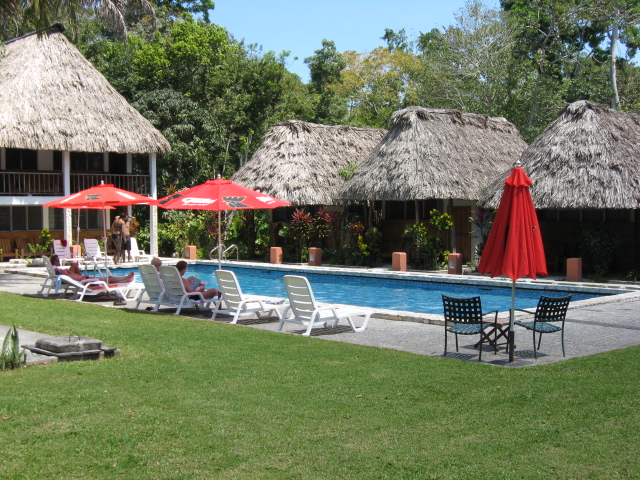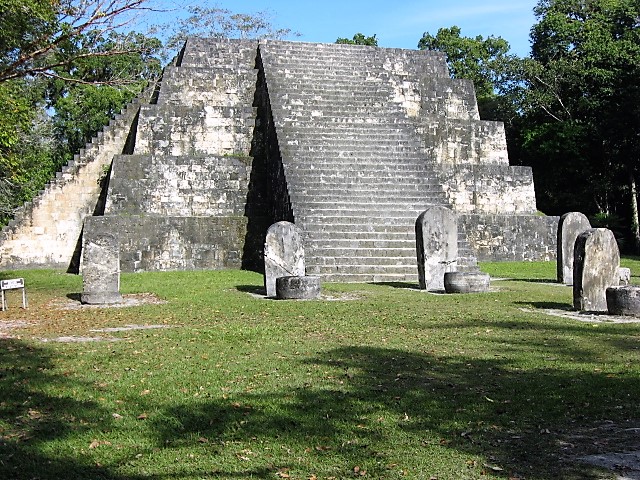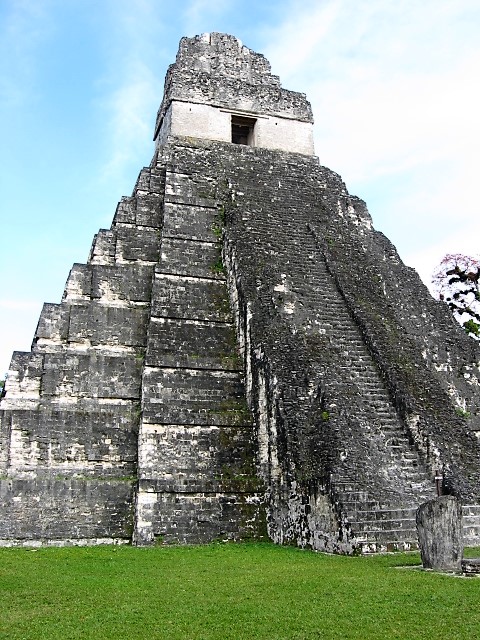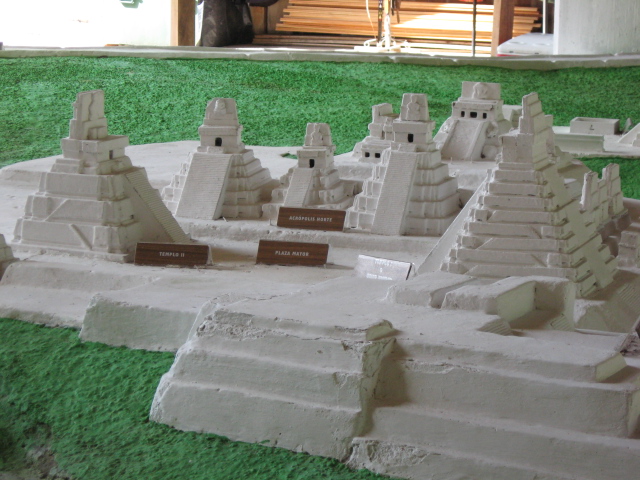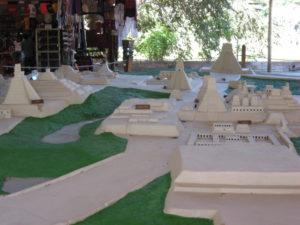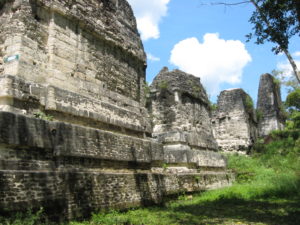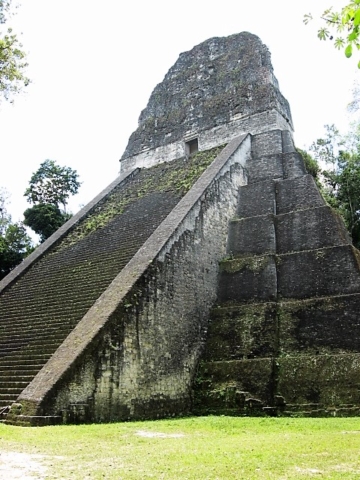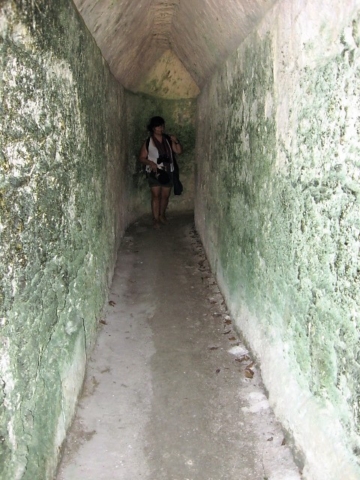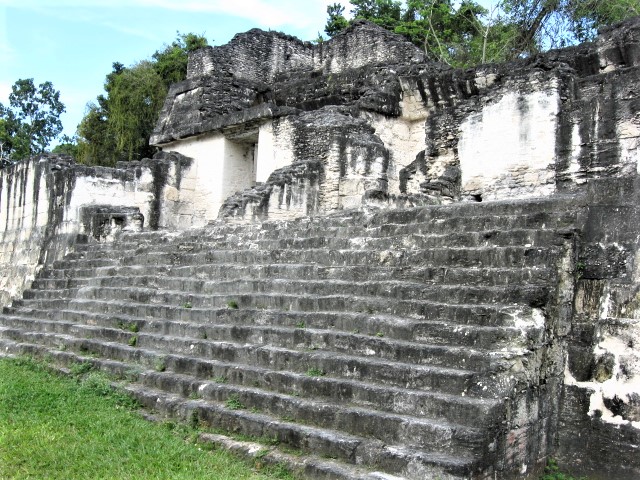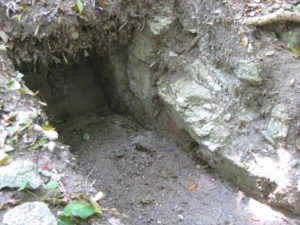
Ruta Maya – Part 15
This is Part 15 of a series of articles about the Aztec and Mayan pyramids and ruins in Central America. Updated Sep 2022.
The Amazing Mayan City of Tikal
The next stop on our tour of the Ruta Maya is the fabulous archaeological site of Tikal in Peten, Guatemala. Of all the Mayan sites I have visited, Tikal is by far the best. Admittedly, the pyramids are not as beautiful as the one at Chichen Itza, but there are six magnificent pyramids at Tikal, along with numerous smaller ones and other structures.
Most tourist travel to Tikal with tour companies starting in San Ignacio, Belize. You can also fly to Tikal from Belize City or southern Mexico.
Another option not used by tourists is to travel across the northern Guatemalan state of Peten, starting from Chiapas in Mexico. I often take the more difficult route, so this is how I travelled to Tikal.
My post about “Getting to Tikal the Hard Way.”
Flores
If you have not travelled to Guatemala before, I suggest spending a few days in the lovely town of Flores on your way to Tikal. Your hotel in Flores can arrange transportation from there to Tikal.
Where to Stay in Tikal National Park
We stayed at the lovely Tikal Inn. This is a beautiful place, but there is no electricity because it is in the jungle. The inn has a generator, but it does not run 24 hours daily. They only have electricity for two hours in the morning and from 6 p.m. to 10 p.m. Good thing I brought a flashlight.
There is an excellent restaurant and a lovely garden with a swimming pool. At about $100, it is expensive by Central American standards. However, you get the huge advantage of staying in the National Park 24 hours daily. At any other location, you will have to spend time travelling back and forth and miss out on evenings and early mornings in the park.
Most tourists spend a few hours in the National Park and then return to Belize. However, after getting to Tikal, you will rob yourself of a great experience if you stay only for the afternoon. Tikal is too fantastic for such a quickie tour.
The Magnificent Archaeological Mayan ruins of Tikal
We spent two days exploring the ancient Mayan city of Tikal. It is the largest of all the Mayan sites I have been to. It has six prominent temples and hundreds of smaller buildings. Two full days is just barely enough to see it all. We still did not explore every building.
The Mayan ruins are within Tikal National Park, which protects not only the ruins but the jungle and the wildlife. This is a great thing because most of the jungle is being destroyed rapidly by clear-cutting for farms, and the animals are being killed for food or just for fun. For example, all the monkeys were shot on a peninsula in Lake Petan Itza.
The park, created in 1956, is 575 sq km (222 sq miles) in size. It became a United Nations World Heritage Site in 1979. If you get a list of the UN World Heritage Sites and go to them, you will see the best and most interesting places in the world.
Wildlife
The first thing that I noticed was how tame the animals were. We saw Oscillated Turkeys and packs of twenty or so Coatimundi (a racoon-like animal) wandering among the tourists without fear. Spider Monkeys are also relatively common and tame. Hunting is prohibited in the parks and protected areas in Mexico. However, the laws there are not enforced. We saw people hunting in Calakmul in Campeche.
Fees and Hours
The entrance fee is expensive at 150 quetzals per day. This is more than $20. Between 150,000 and 350,000 per year, coming to Tikal is a lot of money for Guatemala. Perhaps it is a fair price, and the ones in Mexico are too low. With more money, the sites in Mexico could make many of the improvements that I saw here in Guatemala, such as tourist information booths, plentiful signage, several restrooms and other conveniences for tourists.
The park opens at 6 a.m. to the public. Organized tours can enter at 4.30 a.m. to watch the sunrise from the top of the pyramid. Mayan sites in Mexico do not open until 8 a.m. Many people come here as much to see the birds and other animals as the ruins. The birds and birdwatchers raise early. An 8 a.m. start is late for bird watching. People staying in the park overnight do not have to worry about transportation nor getting there too late to see the sunrise or the morning birds.
History
Tikal was founded about 500 BC. Work on the large temples began about 200 BC. The population ranged between 50,000 and 500,000 and covered about eleven square miles.
Tikal was often at war with Caracol across the border in Belize. Tikal attacked Caracol in 556 and captured several of its nobles. Mayan custom was to sacrifice prisoners of war to their gods. But in 562, Caracol struck back and captured and sacrificed the king of Tikal. Then they destroyed much of Tikal’s stelae and written records and tombs. For the next 130 years, there were no new inscriptions or stelae. Tikal gradually recovered, and in 695, they attacked Caracul and executed its king. The five main temples of Tikal were built in the following 100 years after regaining their dominance over the area.
Temples and monuments were still under construction in 869, the last recorded date at Tikal inscribed on stela #24. By 900, the city was in decline, and by 1200 was abandoned. The reasons for the abandonment remain a mystery.
Touring Tikal
As you enter Tikal, after paying your 150 quetzals, you first come to a group of buildings known as Groups Q and R. Each of these group sites consists of two small pyramids and two other small buildings. There are seven of these four-structure group sites at Tikal.
The Mayans did not use the word “year”. Instead, every 360 days is called a cycle. Twenty cycles make a Katun. Each of these groups was built to celebrate the passing of a Katun.
Group Q
In front of the pyramid in Group Q are several stelae with round altars in front of them. The altar was a place to worship the person or god depicted on the stela. Stelae are like billboards with important religious or regal information.
Of the two small pyramids in Group Q, one is half uncovered, and the other is still entirely covered by more than 1000 years of jungle growth.
At one of the small buildings at Group Q, in a roofless compound, is stela #22. This stela commemorates a new king. His name was Chitam, and he became king in 768. His likeness, carved on the stela, shows an enormous, flowing headdress almost reaching the ground. Stelae are dated, and I learned to read the hieroglyphs on the stelae that indicate the year and the person’s name. A bar represented five years, and a dot represented one year. Thus two dots and a bar were a seven, the first number in the year. It is something like Roman Numerals but with different symbols.
The second pyramid at Group Q is still not uncovered. It was decided that some structures should be left for future generations to restore and explore and because it is costly to uncover, clean and restore them.
The Temples of the Central Plaza
After leaving Groups Q and R, we turned left and came to the rear of Temple One. Walking around Temple One to the front will bring you to the central plaza. This was the heart of the city. Standing in the centre of the plaza, you will have Temple One on one side, Temple Two on the other, Acropolis Norte to the north and Acropolis Central on the other side. An acropolis is a grouping of small buildings and temples. The Acropolis is large, but its structures are relatively small compared to the main temples. With all this surrounding you, it is awe-inspiring. I can imagine the plaza being paved with stones, the temples being new and brightly painted, and all the people coming and going as in the heart of any large city.
Temple One (in the photo on the left) is closed to the public. You can climb Temple Two but not on the original steps. Instead, wooden stairs are there to one side of the temple. There is a nice view of the centre of the city from there.
The central plaza is a great place to sit, admire the temples, and think about the great Mayan civilization that once existed here.
The Acropolis on the left and a model of the central plaza on the right.
The Model City
There are 12 small temples in Acropolis Norte, but they have been severely damaged. I have included some photos from a model city at the visitor centre so you can compare the structures in their original condition to how they look today.
Stelae

In front of Acropolis Norte is a row of stelae depicting the city’s elite. Most of them have a round altar in front of it. When a new king or priest came to power, he often defaced the stela of his predecessor to make sure that the dead person no longer had any power over him.
Other Temples
Going past Temple Two, you next come to Temple Three, which has been left unrestored. Just the top of the structure is visible, sticking out of the jungle.
Next, you will come to Temple Four. This is the tallest of the six large temples in Tikal, towering 210 feet above the jungle floor. It was finished in the year 741. The temple itself is under restoration and is not much to see. One side is covered in plastic, and the other is still covered with trees.
But you can climb the temple for a suburb view of Tikal. You can’t use the original stairs which are being restored and are under plastic, but there is a set of wooden stairs to go up. It is quite a climb but worth it. From the top, you can see Temples One, Two, and Three sticking out of the jungle. When the city was occupied, there were probably not many trees in the city’s centre, and you would have a clear view of the whole city with all the colours and the people going about their daily duties. (It was from the top of Temple Four that I took the photo at the top.)
To the south of Temple Four, you come to an area now known as the Lost World. Here there is a pyramid and many other structures. You can see by the model of the pyramid how beautiful the structures once were.
Next to Lost World is the Plaza of the Seven Temples (photo above). Here there are seven small temples in a row. This must have been a very religious civilization. There are temples everywhere.
Temple Five
Temple Five before and after Cleaning.
After the Seven Temples, you will come to Temple Five and Acropolis South. The Spanish government paid to have Temple Five uncovered, or at least the front of it. However, three other sides and the enormous base remain under the jungle. Clearing 1500 years of jungle growth from the structure is a mammoth and costly job. I remember the guide in Calakmul telling us that it took 500 men several years to clean the front of one pyramid and the plaza.
Temple Five is not as tall as the others, but with its magnificent, wide stairway, it is the best-looking one. Standing at the bottom of the stairway, you are not really at the bottom of the structure. The whole temple is built on a huge base platform. This is not apparent at first because of the jungle growth, but if you look behind you, you will see that the ground drops away steeply to the jungle floor. See the photo of the model. The restoration was completed in 2003, and already the temple has a slight greenish-black look as jungle growth begins again. When the city was occupied, there must have been thousands of workers just to keep the buildings free of plant growth.
Next to Temple Five is Acropolis South which is still covered by jungle. You can see it in the model city.
Temple Six is far from the city’s centre and is not worth the long walk. It is small and not too interesting.
Palace of Acanaladuras
Between Temples Five and Six is a group of buildings known as the Palace of Acanaladuras, although its exact use is unknown. There was a stairway leading to the entrance, but it was also possible to enter through a tunnel which is still intact. We went through the tunnel into the plaza beyond. Most of the buildings are in ruins, and some are still uncovered.
The Mercado
Back near Temple One is what is called the Mercado. This is a complex of small rooms. It might have been a shopping centre. They are not houses as they do not have beds. Beds were made on raised brick platforms; I have seen many of them in other Mayan sites.
New Structure Found
We found one place where some excavation work had just begun. The workers dug a small tunnel into the side of a hill to reveal a structure within. It is very interesting to see how the structures looked when they were found after more than 1000 years of jungle growth.
The photo shows how much earth has accumulated since the city was abandoned.
Summary
Tikal is a fantastic place and very safe. If it is not on your bucket list – it should be!
Click here for a list of all the sites on the Ruta Maya.
